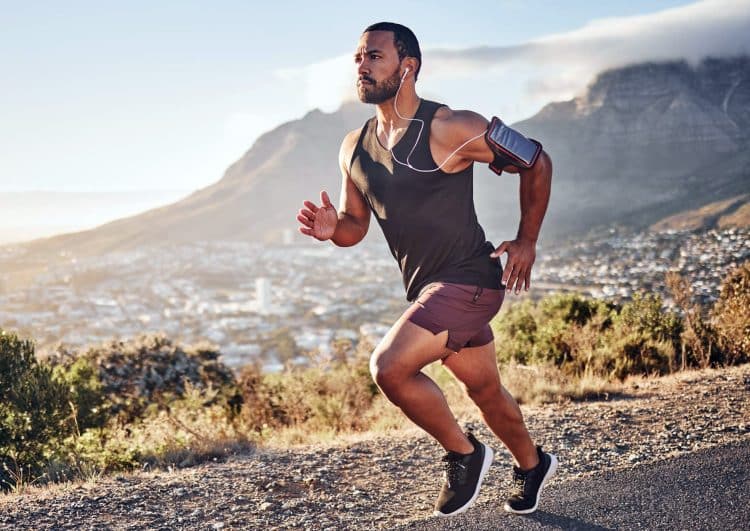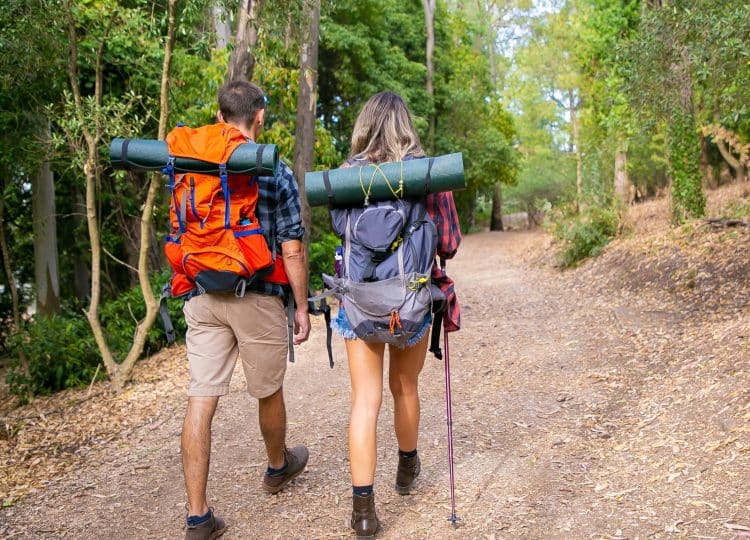As a personal trainer with over seven years of experience, I repeatedly encounter clients who feel the gym is restrictive and uninspiring. It is no wonder that a CrossFit gym is called a ‘box.’ Furthermore, monostructural exercises on cardio equipment, running, rowing, and biking can lead to boredom and a loss of motivation.
A review published in the Science Advances journal outlining the relationship between exposure to nature and reduced risk of mental health disorders like anxiety and depression concluded that time spent in natural environments can decrease stress hormone production, improve cognitive function, and increase feelings of happiness. (1)
Calisthenics is steadily gaining popularity. An increasing number of outdoor fitness training areas are being built around the world. Your neighborhood park probably has a few bodyweight training equipment like a pull-up bar, parallel bars, and monkey bars.
Contrary to what many people think, training outdoors is incredibly effective for building strength, boosting cardiovascular fitness, and burning calories. In this article, I share four types of workouts that are suitable for most people.
4 Types of Outdoor Workouts
Outdoor workouts don’t require any subscriptions, and you don’t have to wait your turn to use a machine, which makes them an excellent option for folks with packed schedules.
Level Up Your Fitness: Join our 💪 strong community in Fitness Volt Newsletter. Get daily inspiration, expert-backed workouts, nutrition tips, the latest in strength sports, and the support you need to reach your goals. Subscribe for free!
“Spending time in nature can lower cortisol levels by almost 10%. Chronically elevated cortisol levels can disrupt this rhythm and cause dysregulation in many physiological processes (2),” said Dr. Rhonda Patrick (Ph.D. in Biomedical Sciences). “Running in nature also means you are breathing cleaner air. Air pollution has been shown to increase inflammatory biomarkers, which are associated with brain aging, Alzheimer’s disease, and other health problems.”
Here are four types of workouts you can add to your routine:
Walking and Running
I recommend beginners and overweight people start with walking workouts. Walking at a brisk pace elevates your heart rate and burns a lot of calories. Doing too much too soon can increase the risk of injury and set you back on your fitness journey.
Experienced exercisers can begin with running workouts. However, you must adjust your training intensity depending on the terrain and the ensuing intensity.
- Trails: Trail running is an incredible way to connect with nature while boosting your overall fitness and well-being. It also offers a softer impact than pavement, making it less harsh on your lower body joints.
- City: Start your walking or running journey by selecting a safe and less crowded route. You can also use this opportunity to explore a new neighborhood or run errands.
Depending on your fitness level and experience, start with a 10-minute walk or run and slowly work your way up to 30 to 45 minutes. Advanced runners can employ HIIT training splits or wear a weighted vest to spike the RPE (rate of perceived exertion).
Outdoor Bodyweight Workouts
Most people underestimate what they can do in a park gym. You don’t even need a calisthenics gym setup in a park to get in shape. Picnic tables, benches, and a pull-up bar can help get the job done.
Here is a sample full-body outdoor bodyweight workout for people of various experience levels:
| Exercise | Beginners (Sets x Reps) | Intermediate (Sets x Reps) | Advanced (Sets x Reps) |
| Push-ups | 2 x 10 | 3 x 12 | 4 x 15 |
| Pull-ups (assisted) | 2 x 10 | 3 x 12 | 4 x 15 |
| Dips | 2 x 10 | 3 x 12 | 4 x 15 |
| Squats | 2 x 10 | 3 x 12 | 4 x 15 |
| Lunges | 2 x 10 (each leg) | 3 x 12 (each leg) | 4 x 15 (each leg) |
| Step-ups | 2 x 10 | 3 x 12 | 4 x 15 |
Tips for the Outdoor Workout:
- Beginners: The first priority should be to drill the movement mechanics. Focus on performing the exercises with a picture-perfect form. Aim for eight reps if you can’t complete 10 reps without compromising your form.
- Intermediate: Perform the exercises for the recommended sets and reps with textbook form. Feel free to use slight variations to challenge yourself further.
- Advanced: Overload your muscles by performing more than 12 reps. However, you can use additional resistance by wearing a weighted vest or backpack and staying in the same rep range to promote hypertrophy.
Pro Tip: Start small and learn to listen to your body. Stop an exercise if something feels uncomfortable or you feel a sharp pain. It is alright to take a day or two off training if you feel beat up and exhausted.
Sports and Recreation
Outdoor workouts can be an opportunity to connect with like-minded people and pursue your passion. This is how:
Team Sports
In contrast to what many think, your fitness journey doesn’t have to be a one-man sport. Join a soccer, basketball, or beach volleyball club to reignite your competitive spirit and become a part of a group. It will also help boost your motivation while helping you shed a serious amount of calories.
Swimming
I recommend swimming to clients who are dealing with lower body joint strains and having trouble with high-impact exercises like running and plyometrics. Swimming can also be used as a recovery tool on your active rest days.
Cycling
Many people find running intimidating. Cycling, on the other hand, is much more inviting. Its low-impact nature makes it perfect for people of all ages. Cycling can help strengthen your lungs and legs, especially on hill climbs.
Adventure Activities
Outdoor adventures are a great way to stay on track with your fitness goals on the weekends or while traveling for leisure. Here are some of the activities that you can try:
Level Up Your Fitness: Join our 💪 strong community in Fitness Volt Newsletter. Get daily inspiration, expert-backed workouts, nutrition tips, the latest in strength sports, and the support you need to reach your goals. Subscribe for free!
- Hiking: Challenge yourself to new heights every time. Hiking challenges your cardiovascular system and boosts your leg strength.
- Rock Climbing: This takes some practice and technique. Rock climbing demands total body control, focus, incredible grip strength, and conquering your fear of heights.
- Kayaking: Explore serene waters or rapids for a fun but demanding workout. It will strengthen your core, shoulders, and arms.
Pro Tip: Irrespective of the type of workouts you pick, consistency is key to achieving your fitness goals. Always have a plan to tackle environmental challenges. Don’t let bad weather derail your training regimen.
Mental Health Benefits of Outdoor Workouts
This is how outdoor workouts can boost your mental health:
Stress Buster
Several studies have shown that spending time in nature can boost your mood and lower cortisol levels (1). Furthermore, many communities have outdoor workout groups, which can make you feel accountable and a part of a team.
Mood Enhancement
Vitamin D can help regulate your mood. Exercise also releases endorphins, which can boost pleasure, alleviate stress, and help manage pain. I generally don’t recommend training late in the evening as it increases the risk of falls and accidents.
Boosts Focus
Outdoor workouts can help get rid of the mental fog and distractions and improve your focus. Going for a walk or run can help clear the mind, promote creative thinking, and cultivate a problem-solving mindset. (3)
Mindfulness
After years of exercising indoors, many of my clients report that running outside can be incredibly stimulating after their first outdoor workout. The sights, sounds, and smells put you in the present moment. Simple breathing exercises while training outdoors at a low-to-moderate intensity can put you in a meditative state.
Pro Tip: Ensure safety while training outdoors by wearing reflective clothing and constantly checking your surroundings. Only use noise-cancelling headphones when you are training in a controlled environment.
Physical Benefits of Outdoor Workouts
Here are the physical advantages of doing outdoor workouts:
Variety
Your bodyweight workouts are limited by your imagination. There are countless bodyweight exercises for each muscle group. Beginners should work with a certified personal trainer to develop a bodyweight training regime for their fitness objectives. You must tweak the number of sets, reps, and resting time between exercises to best suit your goals.
Adaptability
Whether you are a newbie or a seasoned professional, you can fit outdoor workouts into your exercise regimen. For instance, obese beginners can start with a gentle walk to boost their heart rate, whereas advanced runners can challenge themselves with a full-send hill sprint effort.
Functional Strength
Most outdoor exercises are compound movements, meaning they involve multiple muscle groups. These movements can improve your overall functionality, making you better at performing your daily activities.
Boosts Calorie Burn
Increase your calorie-burning potential with hill running, brisk swimming, or performing a bodyweight HIIT workout in the park. Changing the terrain or your route can also vary the resistance and keep your body guessing, which can help avoid plateaus and burn maximum calories.
Vitamin D
A majority of people work indoors and receive limited direct sunlight throughout the day, which increases the risk of vitamin D deficiency. It is primarily produced in the body when ultraviolet (UV) rays from sunlight strike the skin and trigger vitamin D synthesis.
If you plan to train outdoors, it is recommended that you do it early in the morning when it is still relatively cooler.
Motivation: Staying Consistent Outside the Gym
Use the following methods to keep the momentum going:
- Set SMART Goals: Setting specific, measurable, achievable, relevant, and time-bound objectives improves your odds of achieving them.
- Find a Partner: A training buddy can keep you accountable. They can also make the training session fun and challenging, which can keep your motivation levels high.
- Track Progress: Monitoring your progress is key to ensuring you are on the right path. Use the notes app on your phone to track workouts, circumference measurements, body weight, and progress photos.
- Prep is Key: The weather will not always be in your favor. However, you cannot use that as an excuse to skip your workout. Have a waterproof jacket or an indoor cardio or resistance training setup ready as your backup plan.
Conclusion
If you’ve become bored with your current exercise routine or are looking to start afresh, the four outdoor workout ideas listed in this article are a perfect place to start.
Although outdoor workouts can boost enjoyment, you shouldn’t completely shun indoor workouts. Gym training offers the same perceived exertion, exercise intensity, and biological markers, which can help you achieve your fitness goals. (4)
If you have any questions about outdoor workouts, drop them in the comments below, and I’ll be happy to help!
References
- Bratman, G. N., Anderson, C. B., Berman, M. G., Cochran, B., de Vries, S., Flanders, J., Folke, C., Frumkin, H., Gross, J. J., Hartig, T., Kahn, P. H., Jr, Kuo, M., Lawler, J. J., Levin, P. S., Lindahl, T., Meyer-Lindenberg, A., Mitchell, R., Ouyang, Z., Roe, J., Scarlett, L., … Daily, G. C. (2019). Nature and mental health: An ecosystem service perspective. Science advances, 5(7), eaax0903.
- Hunter, M. R., Gillespie, B. W., & Chen, S. Y. (2019). Urban Nature Experiences Reduce Stress in the Context of Daily Life Based on Salivary Biomarkers. Frontiers in psychology, 10, 722.
- Damrongthai C, Kuwamizu R, Suwabe K, et al. Benefit of human moderate running boosting mood and executive function coinciding with bilateral prefrontal activation. Sci Rep. 2021;11(1):22657. Published 2021 Nov 22. doi:10.1038/s41598-021-01654-z
- Lahart I, Darcy P, Gidlow C, Calogiuri G. The Effects of Green Exercise on Physical and Mental Wellbeing: A Systematic Review. Int J Environ Res Public Health. 2019;16(8):1352. Published 2019 Apr 15. doi:10.3390/ijerph16081352











